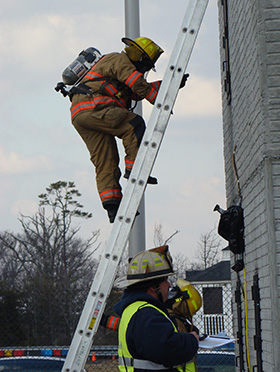Study Details
|
“This is a study many fire industry leaders have dreamed of for several years,” said Chief Dennis Compton of the International Fire Service Training Association (IFSTA) a technical advisor to the project. “Until now, it has simply not been possible, due to the complexity of the tasks proposed and the costs involved. Study Details Within the past fifteen years, studies have advanced in the sophistication of their methods but nonetheless have continued to support the finding that crew size per piece of apparatus clearly affects the effectiveness and safety of fire department personnel during emergency response and fire suppression. In an effort to supplement the scientific evidence available, the intent of this study is to determine how well the fire service decision makers match resources to risk and what factors are important in making better decisions about these matches in the future recognizing that decisions must be made in light of available funding in the community and the level of service the community expects. The overall goal is to reduce firefighter injury and death by making better decisions about resource deployment in a risk filled environment. The study is delineated into three phases.
Based on analysis of data collected in phase I, investigators will address three outcomes; 1) firefighter injury and death, 2) civilian injury and death; and 3) economic impact. They will work to identify the most important factors in determining appropriate deployment to varied levels of adverse risk events occurring in a community. It is their hope to use those data to program a predictive model to be converted into software. The software is to be used by operations chiefs to determine appropriate deployment to risk events in their community in an effort to limit adverse outcomes (firefighter injury and death, civilian injury and death; and economic impact). This data analysis will be coupled with the data from the field experiments in phase II, conducted for both fire and EMS events. For EMS, arrival of BLS and ALS resources were assessed in various time frames for cardiac and systemic trauma events. For fire events, 2, 3, 4, and 5-person crew sizes were assessed in relation to a first due engine and a full alarm assignment responding to a fire in a 2000 sq ft. single family, two story, detached dwelling. The low hazard residential structure is the baseline event for the study. Once investigators have base line data, they may assess greater risk environments in the future. Though phase I continues, as more than 400 U.S. departments enter incident data into the web-based survey, the field experiments are complete. As noted above, the field experiments were conducted to show the effect that different crew sizes and arrival times have on time-to-task and operation effectiveness. In addition to the partners on the project (IAFC, IAFF, NIST, WPI and CFAI) both Montgomery County (MD) and Fairfax County (VA) firefighters were involved in the field experiments. The experiments were conducted on site at the Montgomery County (Maryland) Fire Department Training Academy. Relevant NFPA standards including NFPA 1403 were followed during the experiments. The resultant data are now being analyzed and the results will be used to develop educational products/materials for dissemination to local government decision makers. These products are anticipated for release in the fall of 2009. This research study will ultimately provide scientific evidence to guide these decision makers toward informed choices in regard to firefighter safety in light of available resources. The study results will give policy makers the information they need to make decisions regarding the fire department mobile and personnel resources they deploy and to assess the risks associated with their decisions. Questions regarding the study may be directed to Dr. Lori Moore-Merrell at 202-824-1594 or lmoore@iaff.org.
|
|
